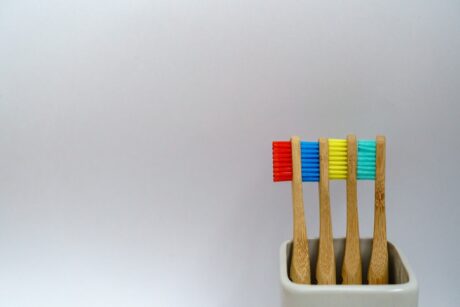Toothbrushes are a handy piece of equipment that is a staple to our daily routines. Some people have electronic toothbrushes with all the fancy bells and whistles, and some have manual toothbrushes. Did you know – one is actually better than the other? Toothbrushes are not the simple bit of kit they appear to be. There’s a right and wrong way of using them, the toothbrush you use matters, and some gross things are hiding in the shadows – all of which will be explored below.
The Bristle Types Matter
Naturally, you might think that hard bristles would be better. Surely they have the strength to tackle bacteria and plaque build-up – right? Wrong. The American Dental Association (ADA) recommends a soft-bristle toothbrush as they’re not as harsh on gums and enamel. Soft-bristle brushes still do the job well as long as you use the correct technique. The ADA also recommends using soft-bristle brushes with multiple layers — preferably angled bristles — for the best clean.
There’s A Right and Wrong Technique
Millions of people won’t realize that there’s a right and wrong brushing technique. Most people should know that the recommended amount of time you should spend brushing your teeth is two minutes, ensuring time is spent equally on each section of teeth. One Mississauga dental clinic on their website’s blog also warns against brushing too hard, as it can erode the tooth enamel and cause irritation to the gums. But at the same time, you can’t be too gentle.
Colgate, a leading toothpaste and oral care brand, has sent out the following recommendations for the ultimate toothbrushing experience, outlining the Bass or Sulcular technique to be the best:
● Brush for two minutes. Brushing longer won’t cause damage, but prolonged forceful brushing will.
● Hold the brush parallel to your teeth and angle to 45 degrees – the brush should sit just under the gumline.
● Brush using a circular motion moving back and forth along one section of teeth 15-20 times.
● Ensure you brush inside of the teeth as well as the outer parts.
● Brush the tongue.That’s the best brushing technique you’re going to get. That should ensure all the corners and nooks and crannies of your teeth are covered.
They Can Contain A Lot Of Bacteria
One well-known fact about toothbrushes is they contain a lot of bacteria. A study carried out by the University of Alabama in Birmingham even found fecal germs to be on toothbrushes. That’s why experts recommend that you change your toothbrush every three to four months or earlier if you feel like a new one is needed. Another study by a university in Manchester, UK, concluded more than 100 million bacteria are living on toothbrushes.
Electronic VS Manual
There’s no debate here; electronic toothbrushes are much better at cleaning your teeth than manual ones. Scientists discovered people using electronic toothbrushes have healthier gums, healthier teeth, and better breath – according to DentalHealth.org.
Toothbrushes are far more advanced than they once were – with electronic toothbrushes now having more features than ever before (some of which people will never really use). A good toothbrush and the correct technique will leave your mouth squeaky clean.
Thanks to Diane
A Guide to Toothbrushes
December 10, 2021 by






